- NEED HELP? CALL US NOW
- +919995411505
- [email protected]
Parkinson’s Disease
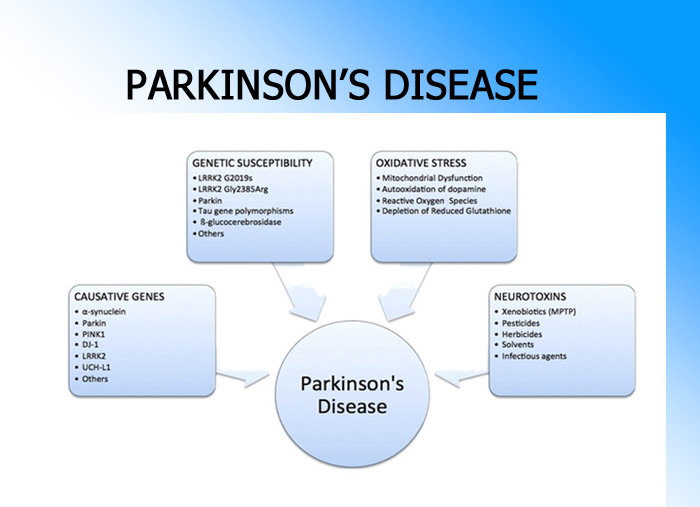
Parkinson’s disease , is named after James Parkinson who in 1817 wrote a classic “shaking palsy”a disease for which the reason is still unknown .
DEFINITION
It is a chronic degenerative disorder that primarily affects the neurons of the basal ganglia. It is a syndrome that consists of slowing down in the initiation and execution of movement (bradykinesia), increased muscle tone (rigidity), tremor and impaired postural reflexes
ETIOLOGY
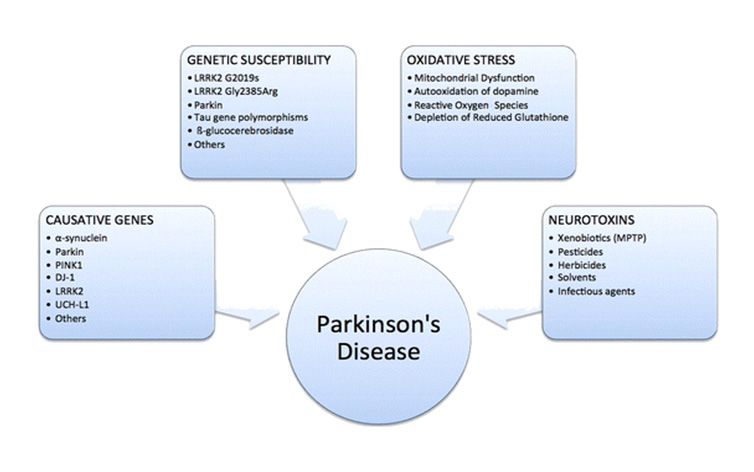
PATHOLOGY

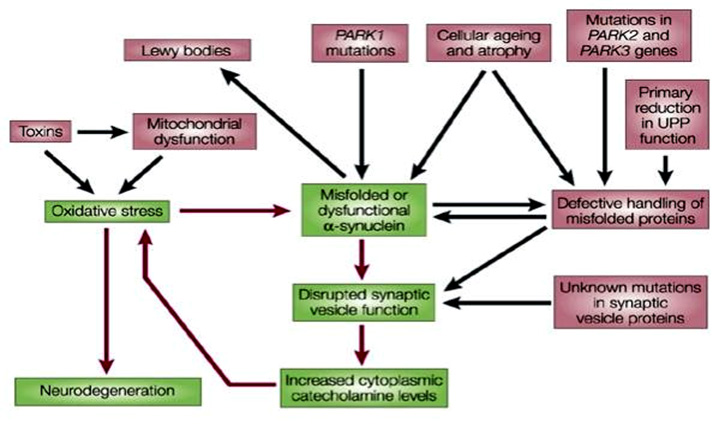
CLINICAL FEATURES
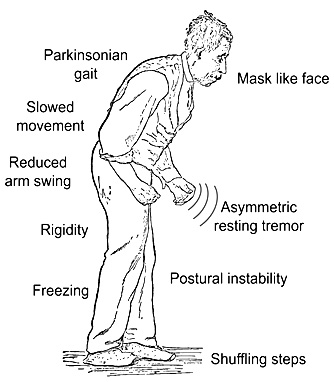
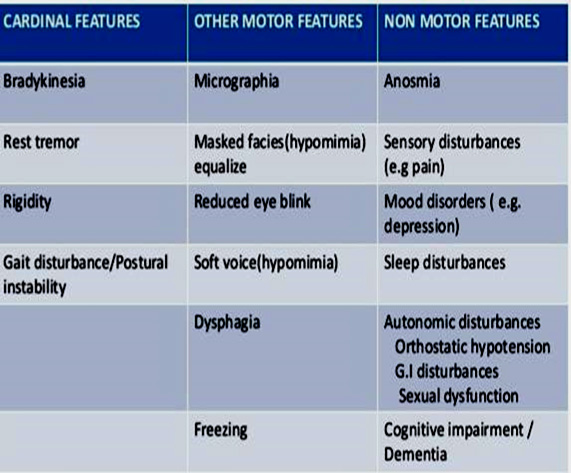
DIAGNOSIS
- Investigations: The diagnosis is made clinically, as there is no diagnostic test for Parkinson’s disease
- Causes of parkinsonism: : Toxins (manganese, CO poisoning), CNS infs, structural lesions, metabolic disorders, other neurologic disorders.Most are rare& suggested by atypical features, history or exam.
- Imaging (CT or MRI) of the head may be needed if there are any features suggestive of pyramidal, cerebellar or autonomic involvement, or the diagnosis is otherwise in doubt (e.g to exclude stroke).
- Routinely needed to consider 2 alternative diagnoses:
- Drug-induced parkinsonism
- “Parkinsonism-plus” syndromes: parkinsonian features with other neurological signs atypical of parkinson disease
PARKINSON’S DISEASE TREATMENT
- Current pharmacological therapies – symptomatic treatment 28
- Levodopa to replace dopamine L-DOPA + peripheral-acting dopa- decarboxylase inhibitor to improve L-dopa availability in the CNS, e.g. benserazide, entacapone.
- D1 and D2 receptor agonists e.g. Apomorphine, bromocriptine, pergolide – favoured early in L-dopa-sparing pharmacotherapeutic approaches
- MAOB inhibitors e.g. selegiline
- COMT (catechol-O-methyl-transferase) inhibitors: e.gEntacapone
- Amantadine – dopamine releaser, reuptake inhibitor? Anticholinergic drugs (Muscarinic receptor antagonists)
Related posts
April 10, 2025
April 9, 2025
April 4, 2025




